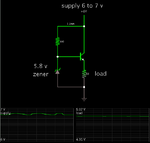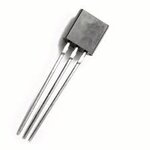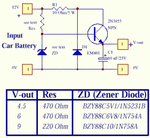rajaram04
Advanced Member level 3

Hello sir
sir in the given circuit diagram below it is mentioned that 6 to 7 volts can be apply but i want to know what if i connect a maximum of 8 volts in place of 7 volts ???
If it is ok then no issue but if it is harmfull for the circuits iam using for 5 volts supply then how to sort out the problem ? what changes we have to make in circuit ??
I am using this kind of circuit specially to drive 3 pin IR sensors . . so please help

sir in the given circuit diagram below it is mentioned that 6 to 7 volts can be apply but i want to know what if i connect a maximum of 8 volts in place of 7 volts ???
If it is ok then no issue but if it is harmfull for the circuits iam using for 5 volts supply then how to sort out the problem ? what changes we have to make in circuit ??
I am using this kind of circuit specially to drive 3 pin IR sensors . . so please help




